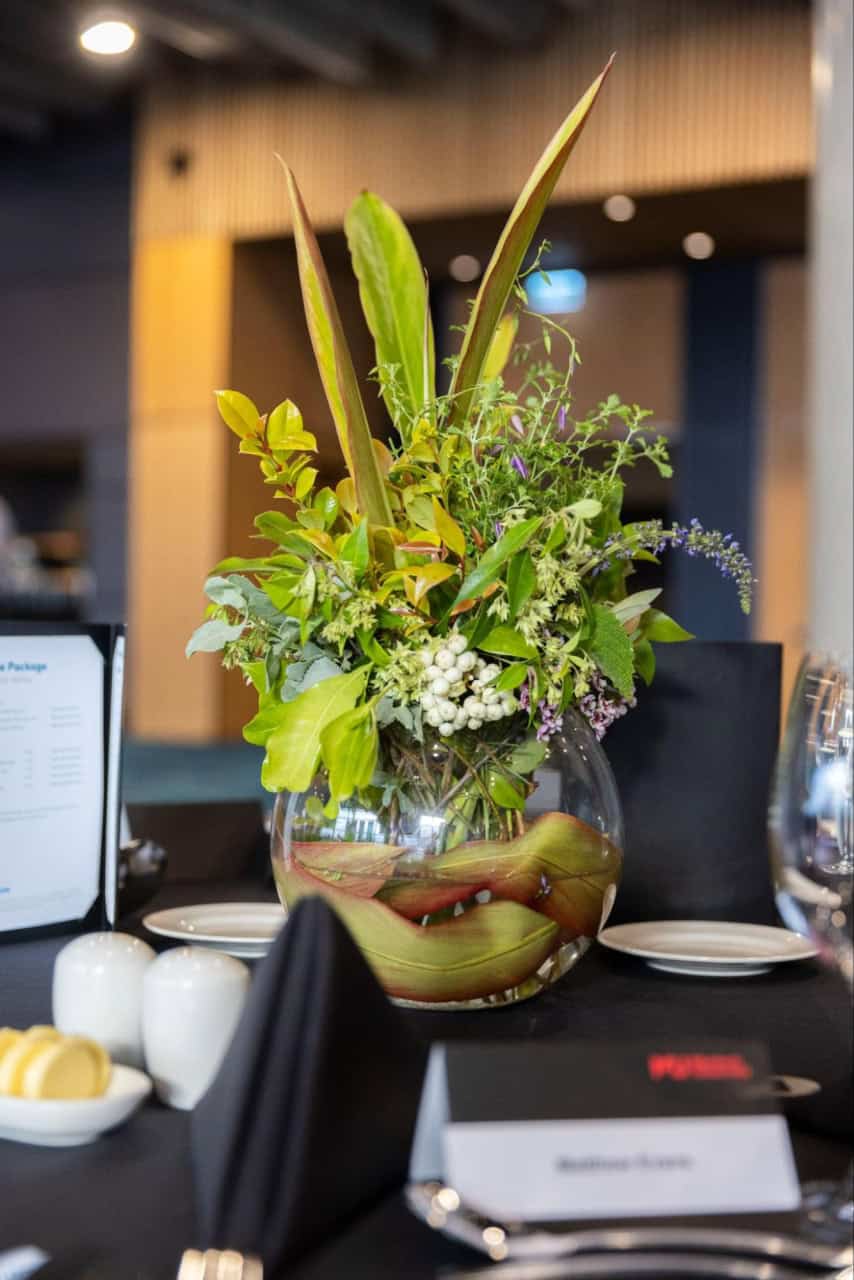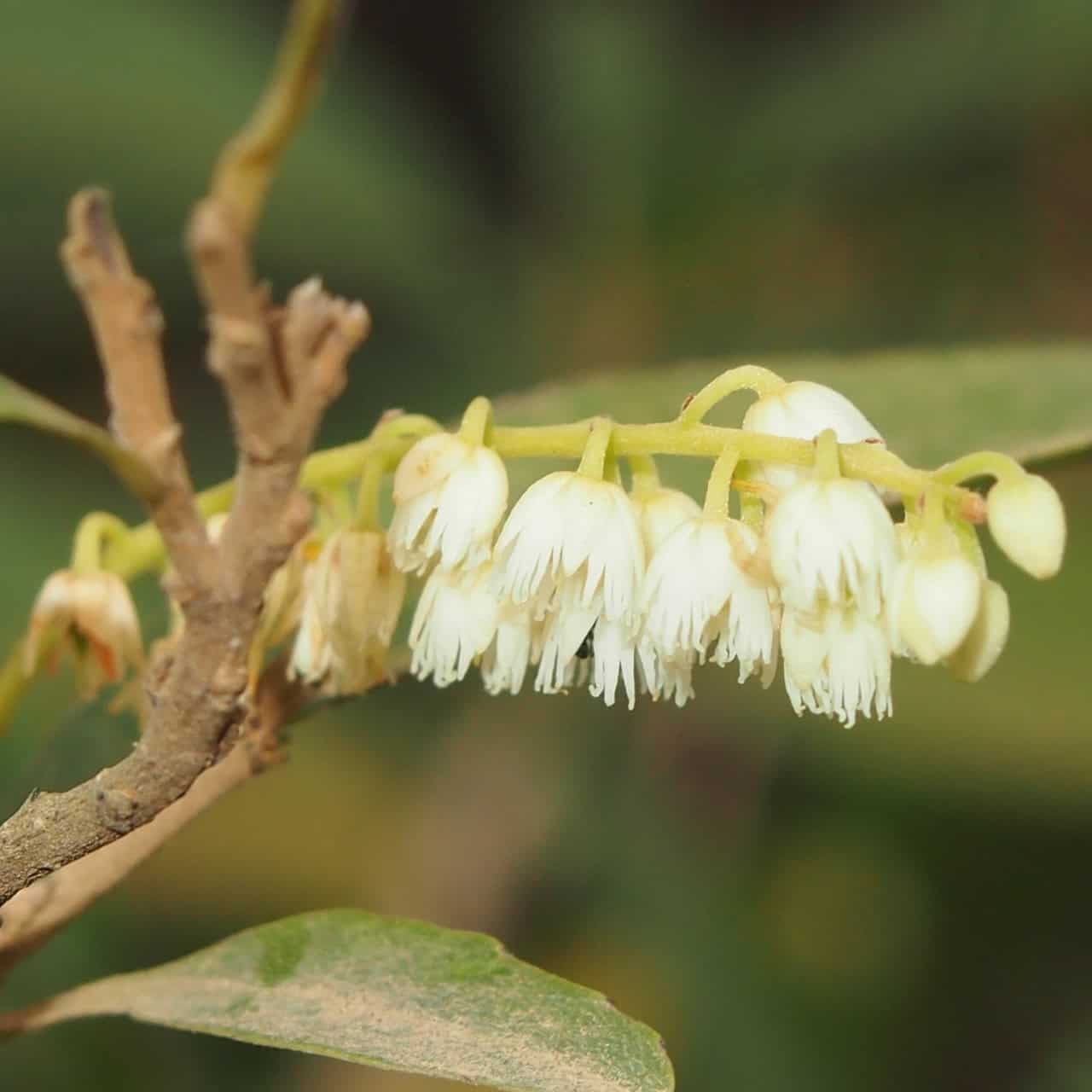With a range of textures, colours and aromas, many Australian bushfood plants make visually stunning (and fragrant) floral arrangements. Most of the native plants selected for this article are best planted around this time of year, giving them time to establish before their flowering season.
Jambinu Zest
Jambinu Zest (Chamelaucium ‘Jambinu Zest’) is the world’s best culinary Geraldton Wax that boasts a brilliant pink floral display around Winter to Spring (though flowering times may vary depending on region). It produces edible needle-like leaves and waxy flowers similar in flavour to a Lemon Myrtle.

Jambinu Zest flowers add a cheerful pop of pink. Also included in the arrangement are White Aspen (Acronychia obongifolia), Bush Basil (Plectranthus graveolens) and Red Back Australian Ginger (Alpinia caerulea ‘Atherton’). Also Foliage - Syzygium Tucker Bush Cherry, Old Man Saltbush (Atriplex nummularia) Flowers - Cinnamon Myrtle (Backhousia myrtifolia) Native Thyme (Prostanthera incisa)
Native Herbs
Native herbs such as Bush Basil (Plectranthus graveolens), Native Oregano (Prostanthera rotundifolia), Native Thyme (Prostanthera incisa) and Wild Mint (Mentha diemenica) all bear attractive leaves, quaint flowers, and fresh, uniquely Australian aromas.

Native Thyme (Prostanthera incisa) flowers in the Spring, but produces fragrant and interestingly shaped foliage throughout the year. Perfect for native posy arrangements.
Blue Quandong
Blue Quandong (Elaeocarpus angustifolius) is a native rainforest evergreen, named for its remarkable berries. Well cared for, this tree makes a spectacular showing of flowers in Autumn and Winter, meaning you’ll get to check them out in nurseries beforehand if you plant during the cool season.

Blue Quandong flowers are elegantly white and weeping in Autumn, turning into brilliant blue berries after the cold weather subsides. Mark Marathon, CC BY-SA 3.0, via Wikimedia Commons
Lemon Myrtle
A popular bushfood species, the Lemon Myrtle (Backhousia citriodora) is another Autumn bloomer that explodes in flamboyant, fragrant flowers as the weather cools. Its fresh tangy leaves may be used for teas, cakes, sauces and cocktails. Be sure to check out our recipes section for dishes graced by the Queen of Lemon Herbs (which happens to be a Tucker Bush community favourite!).

Fun fact: It’s tradition for British royal brides to carry a sprig of myrtle in their bouquet. Given the beauty of these blooms, is it any wonder they’re considered the flower of love and marriage?
Rosella
Australian Rosella (Hibiscus sabdariffa) is a hardy plant that’s adapted to a range of Australian ecosystems. This beauty flowers in Autumn, producing bright red edible calyxes with a tart, sweet flavour. To harvest simply snip the plumpest calyxes straight off the bush. Rosella seeds and leaves are also edible.

Rosella is a popular ingredient in sauces, jams, teas, and as a decorative flavouring additive for champagne and cocktails.
Native Turmeric
Also called the “Cape York Lily”, Native Turmeric (Curcuma australasica) is a tropical flowering ginger that features as a roast root vegetable in Guugu Yimithirr Aboriginal cuisine. Late winter/early spring is an ideal time to plant, as this species puts on an incredible flowering display from September to December.

Consider Native Turmeric’s first bloom as a sign of maturity, and allow another year of growth before harvesting the rhizomes. As a culinary ingredient, this plant makes a great native substitute for Asian turmeric.
Raspberry Wattle
While Raspberry Jam Wattle (Acacia acuminata) flowers in Spring, it’s still a worthy addition to any bushfood garden. Seed pods harvested in Summer can be ground into flour for homemade cakes and biscuits. The orange-coloured resin is also edible, perfect for a native tea.

No time to grow your own?
Tucker Bush Native Herbs are dried and ready to use in your cooking. Enjoy these local flavours with cooked meats, baked treats and steeped in hot water for an aromatic tea.




